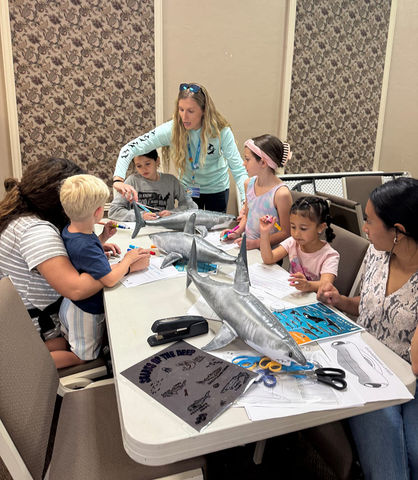Behind the Science: A Closer Look into the World of Mermaid Purses
- Sharks4Kids
- Dec 2, 2021
- 2 min read
Author: Natasha Hynes
Elasmobranchs (the collective term for sharks, skates, and rays) have a variety of reproductive strategies. They can be oviparous (lay eggs), viviparous (give birth to live young), or they can be ovoviviparous ( aplacental viviparity), which means they produce eggs that hatch within the mom’s body. You may have found evidence of oviparous species, which are the skates and some sharks, in your area while beachcombing. Egg-laying species produce an egg casing that is often called a “mermaid’s purse” that is a leather-like texture and very tough. This gives a safer environment for the embryos to grow. At the same time, the egg case has to be permeable enough for oxygen exchange while the embryo grows. But, some scientists were wondering, how is this egg casing so tough and yet still highly permeable? What makes it so durable and tough? Researchers from California used microscopes and X-rays to have a closer look.

Skate eggcase found in Newfoundland, Canada
First, researchers used a tool called an electron microscope to look at the egg cases of swell sharks (Cephaloscyllium ventriosum). Electron microscopes are highly powerful tools that use a beam of electrons to produce very high quality images of samples. Perfect for looking at the intricacies of egg casings! Their analyses using this method showed them the pores of the non-cylindrical fibres that make up the egg casing. Taking it a step further, the researchers used X-rays to have a closer look at the nanoribbons. In doing this, they were able to see the arrangement of the nanolattice, which are the fibres that make up the nanoribbons.
Nursehound embryo Credit: Dr. Lauren Smith
These analyses showed a “hierarchical architecture” which means that each component of the fibres, from the tiny nanolattice all the way up to the overall fibres, work together to create a tough, yet permeable, egg case. First, the nanolattice enables the permeability required for oxygen-exchange through the egg casing. The structure of the lattice itself also plays a role in toughening the egg case. These nanolattices are arranged into nanoribbons, which are non-cylindrical. This non-cylindrical shape helps distribute stress over the fibres so that the egg casing is better able to handle external forces that may break it. Finally, the nanofibres are further reinforced by being stacked at an angle. These three layers, each with their own mechanisms of toughening, work together to make shark and ray egg cases durable to their environment while still allowing a healthy development for the embryo inside.
Reference
Goh R, Danielsen SP, Schaible E, McMeeking RM, Waite JH. Nanolatticed Architecture Mitigates Damage in Shark Egg Cases. Nano letters. 2021 Sep 29;21(19):8080-5.


















